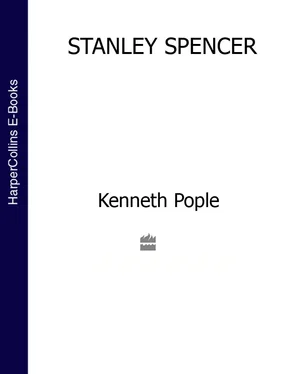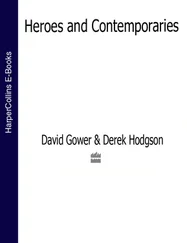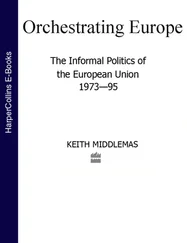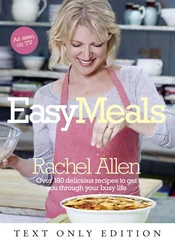1 ...6 7 8 10 11 12 ...30 The figures in Stanley’s paintings are symbols of our primeval consciousness, of the thrust of male fertility and of the protectiveness of female parturition; the duality of fecundity. In his struggle to understand, Stanley is returning to a literal beginning, to the implications of his earlier reading, for example, of The Golden Bough , to the ‘embryonic fish’ of his contemporary Wyndham Lewis, to the understanding which was to obsess another young genius of his generation, D. H. Lawrence, however differently expressed. In the painting, Stanley tells us, Mary and Joseph are ‘related in some sacramental ordinance’. It is as yet beyond his comprehension. Stanley is still physically Joseph, virginal, restricted in experience to ‘doing something to a chestnut tree’. Yet in some spiritual sense, glimpsed if unrealized, he is also Mary, the mother who is fulfilled in that ultimate act of creation, the birth of God. Stanley’s inability to resolve the dichotomy troubles him. He is as yet a child in comprehension, relegated to a crib (an ‘afterthought’) at the feet of the majesty of creation. ‘The painting’, wrote Stanley, ‘celebrates my marriage to the Cookham wildflowers.’ 6
There were some who glimpsed his meaning, but few who might have felt the power of what he was trying to say, and fewer still who would have sympathized. To the devout of the day he was toying dangerously with the pagan sources of Christianity. Yet to him the apparent unchangingness of Cookham was becoming revealed as the everlasting rhythm of the mystery of death and rebirth, of the miracle of the emergence of exquisite form from meaningless chaos, of the marvel of that gift given him to fashion into art – into ‘compositions’ – the random chess or domino or draughts pieces which the world of the senses emptied into his brain. The same forces which compelled Cookham into the renewal of spring were those which moved his hands into creativity and his spirit into ecstasy. He and Cookham were united by that force, ‘married’, so that creation – birth – emerged from disorder – death – in each.
Spanning the two was the seed. In front of the kneeling Wise Man in The Nativity a plant grows, its pattern boldly shadowing him to draw our attention to it. It is apparently a sunflower, that traditional symbol which will appear in future paintings of Stanley’s as the promise of seedburst to come. As Stanley wandered enraptured among the wildflowers of the Cookham water-meadows, blossoming then in uncontrolled profusion, he was overcome not only by an aesthetic beauty he would glorify in later landscapes and still-lifes, but by an awe of their greater role as silent witnesses to the compulsion of fecundity. Like a woman adorned for her lover, each flower flaunted its beauty as sexual invitation, honouring its instinctive purpose as the provider of the seed for future life. The seed was in Stanley himself too, as it was in all animate things, in the men, women, girls, babies, trees, flowers, corn, lambs or beehives of his early compositions. As an animate thing it had been nurtured into existence through what scientifically might be called a ‘conducive environment’, but which to Stanley was the protection, the security, the peace, the ‘cosiness’ of its ‘home’. Thereby it had been brought to its power of fertilization, the token of an ultimate fulfilment dedicated beyond any urge of immediate satisfaction to the compulsion of rebirth, the cosmic coming-together of male and female elements, the drive of creation. That above all was inevitable and holy, and each of us is a priest in worship. It is surely no coincidence that most of Stanley’s early paintings are set in spring or summer, and show meetings, conjoinings or emergences. The exhortations of John Ruskin have Stanley as firmly in their grip as earlier they had held Proust and Tolstoy. *
Stanley’s painting won the Summer Picture Figure Composition Prize of £25 which was shared with a fellow-student. It still hangs today in University College, London.
CHAPTER SIX
Self-Portrait, 1914
All original artists, I am certain, have always worked without reference to their work’s effect on spectators other than themselves; and they have always assumed that their work has intrinsic value when they themselves have honestly and competently passed it as exactly the thing which they had set out to do.
R. H. Wilenski: Preface to The Modern Movement in Art , 1927 1
I have just bought Cookham’s great picture of the Apple Gatherers. I can’t bring myself to acquiesce in the false proportions, although in every other respect I think it’s magnificent. I’ve made great friends with him, I went down to the place Cookham two Sundays ago and spent the afternoon in the pullulating bosom of his family. There are too many of them, six out of nine were there, beside the parent-birds, and they are very gregarious, so I never got Stanley to myself; but it was an amusing experience. 2
THE LETTER-WRITER was Edward Marsh, scholar, wit, man-about-town, patron of up-coming artists and poets, and at the time private secretary to Winston Churchill. The letter was to Rupert Brooke, then (1913) travelling in America and the Pacific:
The father is a remarkable old man still in his early middle age at about 70 – very clever but – I beg his pardon, I mean ‘and’ – a tremendous talker, and frightfully pleased with himself, his paternity, his bicycling, his opinions, his knowledge, his ignorance – due to the limitations of his fatherhood of nine – his radicalism and everything that is his. … Gilbert is an artist too but only six months since. Stan had only about two things to show, he does work slowly.
Until the 1910 and 1912 London exhibitions of post-impressionist paintings, picture collecting had been largely confined to the purchase of traditional Victorian themes or the resale of Old Masters. But now a fashionable interest was developing among progressive connoisseurs in acquiring the work of young British painters, an interest encouraged by the more enlightened London galleries, by the formation of new groups of artists such as the London Group or the New English Art Club, and by the coming together in loose assemblies of intellectuals and aesthetes. Such an assembly was the celebrated Bloomsbury Group, one venue for which was the Bedford Square home of the startling Lady Ottoline Morrell. The Contemporary Arts Society, formed by Lady Ottoline and Roger Fry in 1910 to acquire the work of up-and-coming artists for national collections, was a product of the new outlook.
Not all the collectors were wealthy enough to indulge their enthusiasm at will. Some, like the ‘prodigal collector’ Michael Sadler, who had been Steward of Christ Church, Oxford, in the days when the Reverend C. L. Dodgson – Lewis Carroll – had been a tiresome Curator of the Common Room, and who was now Chancellor of Leeds University, had to restrict their collecting to the use of such cash as they could raise extra to their emoluments. Edward Marsh was one of these. Although not at all wealthy, he was the recipient in addition to his salary of a fossil pension which had unexpectedly descended to him from a ‘mad aunt’ and which was paid periodically on account of a distant forebear, the Prime Minister Spencer Perceval, assassinated in the House of Commons in 1812. This surprising bounty was used by Marsh to buy paintings, originally the conventional old masters, but now from ‘all those bloody artists’ as Rupert Brooke described them. *
Stanley was encouraged to display Apple Gatherers at the Contemporary Arts Society’s summer exhibition of 1913 at the Goupil Galleries – the galleries in which the young Vincent van Gogh had once worked as an assistant. The significance of the painting was quickly spotted. Among the visitors was the painter Henry Lamb, then twenty-eight or so, who wrote to congratulate Stanley. The Gauguinesque influence in the painting appealed to Lamb, whose own work, particularly of Breton fisher-folk, was perhaps similar in style. He was a fringe member of the Bloomsbury Group at the time that Clive Bell was acting as buyer for the Contemporary Arts Society. Lamb and others confidently expected that Bell would agree to the purchase of Stanley’s painting for £100, wealth to the young artist. But Bell, obsessed with his art theories, vetoed the purchase. *There was consternation at the decision, and Lamb was so incensed on Stanley’s behalf that although by then painting in the west of Ireland he wrote to offer £30. Sydney recounts in his diary the family delight: ‘Stan corroborated the happy news that Florence brought me last night. He has had an offer of £30 for his picture the Apple Gatherers from a Mr Lamb. I am so glad about this.’ 4
Читать дальше









![Brian Thompson - A Monkey Among Crocodiles - The Life, Loves and Lawsuits of Mrs Georgina Weldon – a disastrous Victorian [Text only]](/books/704922/brian-thompson-a-monkey-among-crocodiles-the-life-thumb.webp)


